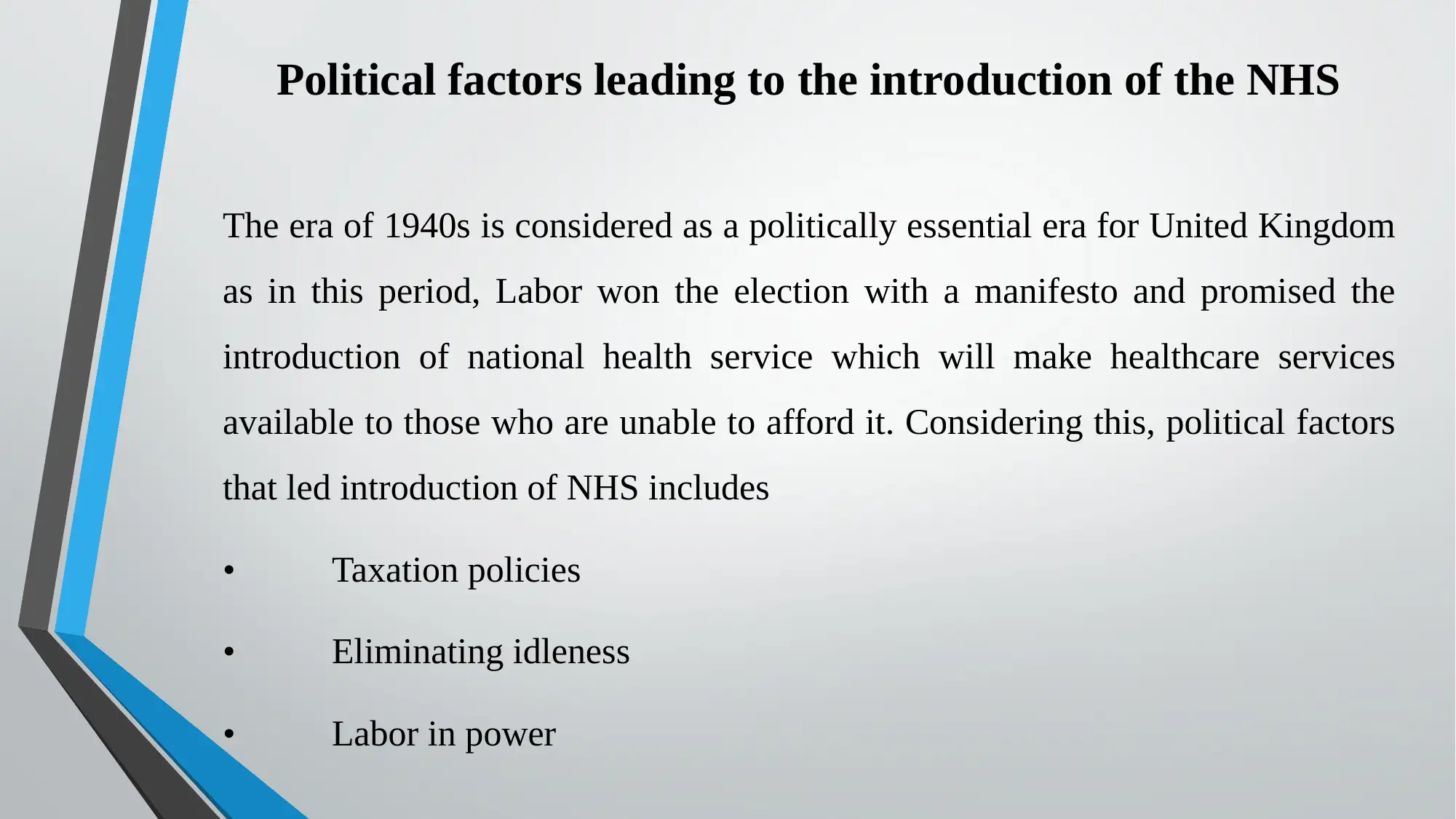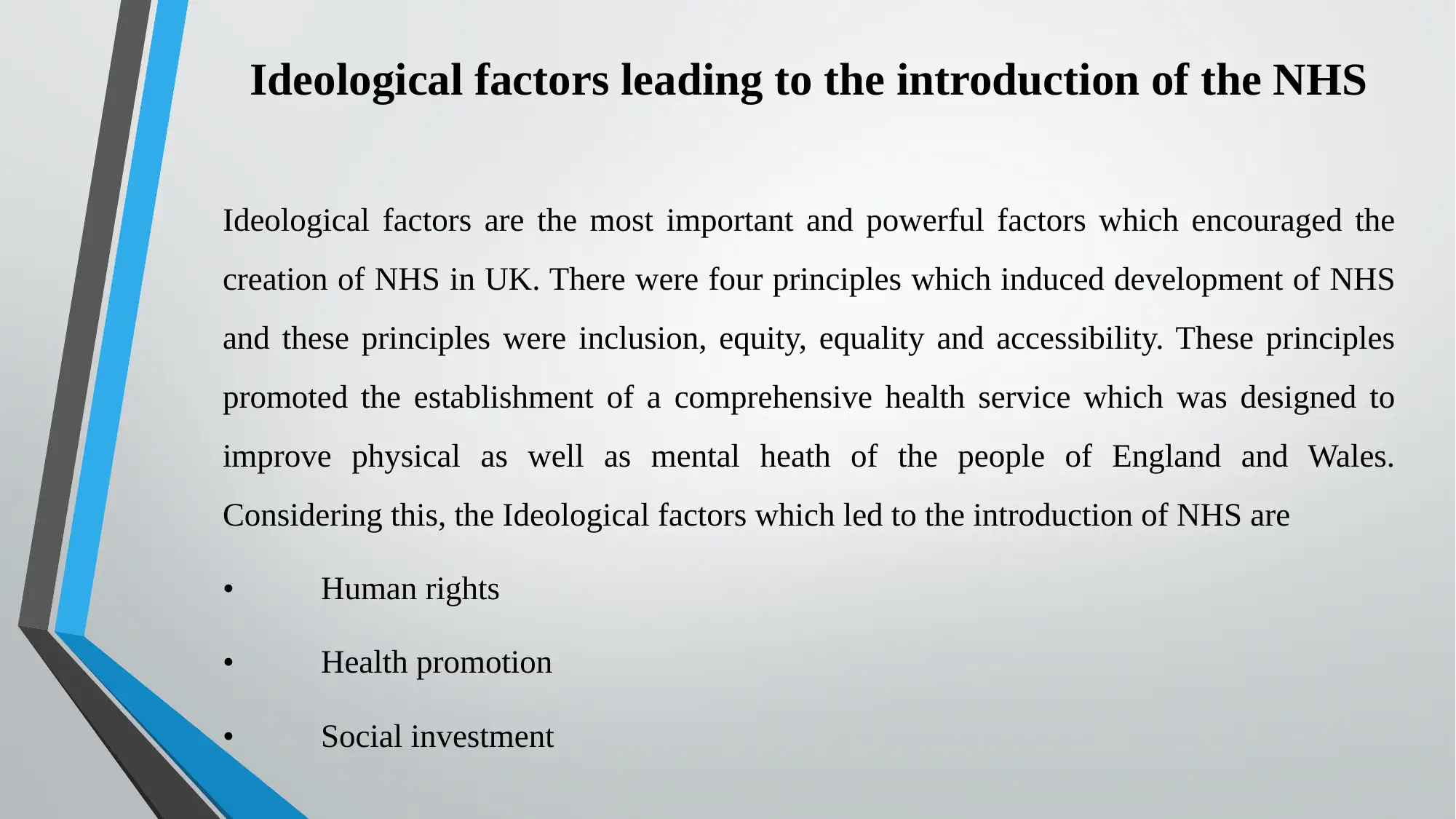The National Health Service: Factors of Introduction Analysis
VerifiedAdded on 2023/01/09
|14
|1194
|60
Report
AI Summary
This report provides a comprehensive analysis of the factors that led to the introduction of the National Health Service (NHS) in the United Kingdom. It explores the social factors, such as wealth, population density, and quality of life, that created a need for a publicly funded healthcare system. The report also examines the political factors, including taxation policies, the role of the Labour party, and efforts to eliminate idleness, which facilitated the NHS's establishment. Furthermore, it delves into the ideological factors, particularly the principles of inclusion, equity, equality, and accessibility, that underpinned the NHS's creation. The report then discusses the significant changes to the NHS's funding and structure over time, and their impact on both service users, including issues like rationing and access, and service providers, such as changes in work locations and wages. The analysis draws on various sources to provide a well-rounded understanding of the NHS's evolution and the challenges it faces.
1 out of 14




















![[object Object]](/_next/static/media/star-bottom.7253800d.svg)